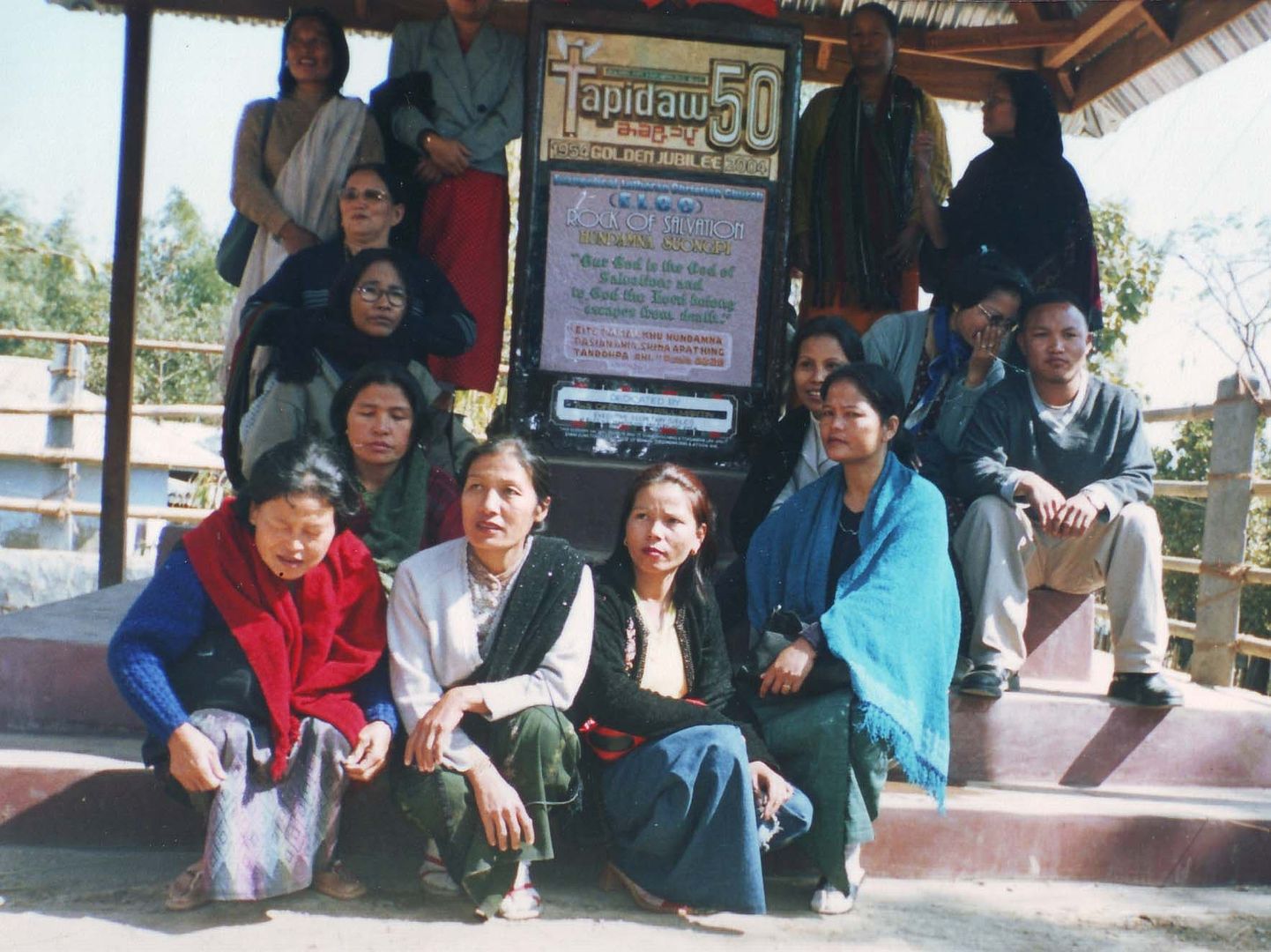Jou Christian Association Golden Jubilee Souvenir
>> Tuesday, October 30, 2007
 JCA Golden Jubilee Souvenir at Daijang
JCA Golden Jubilee Souvenir at DaijangLocal Church Movement under JCA
Things Fall Apart: Social Crisis
The pagan Sakhua religion was under direct assault in Southern Manipur with the establishment of NEIG Mission at Old Churachand (Mission Compound) in 1930. The Paite, Hmar and Thadou tribes were among the earliest advocates of the Christian conversion. Along with the Simte, the Zou tribe was slow in responding to new ideas ushered in by the Christian mission. Perhaps due to their anti-colonial legacy, the Zous became the last bastion of pagan "Sakhua" in the area. Though cultural rootness has it own merits, it was a setback from modernization point of view. By the 1950s, there were a handful of Christian converts among the Zous too. But the Zou converts were disorganised and scattered. The new Zou Christian converts joined different dialectal groups, especially the Paite and Thado Christian groups. Among the intelligent sections of the Zou, there was a strong desire to stem the tide of this social crisis. Their solution was to embrace the church movement by preserving the unity of the Zou community ironically through mass conversion.
Winds of Change: Social Renewal
A migrant from Mawngawn village, Pu Kam Za Khup became a resident of Daizang village since 1951. His arrival in Daizang made that village a hub of Christian activities in the 1950s. Despite his humble occupation as a peasant, Kam Za Khup appeared to be a born reformer. He was consumed with zeal to initiate a local church movement among his tribes-people – the Zou dialect community. When he moved into Daizang in 1951, there were reportedly just four Christian villages out of the total sixty-six Zou villages. Enthused with the challenge of initiating a new movement, this layman shared his social vision with his confidant named Thawng Za Khup. Both jointly managed to bring the village elders for a public discussion at Tuaitengphai in 1952. But nothing concrete came out of the meeting. Still undaunted, Pu Kam Za Khup continued his campaign for a cause close to his heart. The reformist duo (Kam Za Khup and Thawng Za Khup) would excitedly talk about their future project even while working in the wet rice field.
The preliminary Tuaitengphai Meet 1953
There seemed to be a lot of spade work before the historic JCA Conference could be convened on 20 February 1954. A preliminary meeting was held at Tuaitengphai village on the occasion of ‘Haitha’ (First Fruit) festival in which the villages of Daizang, Boh Lui and Khiang Lam were scheduled to participate; but the last two did not turned up. The meeting was an outcome of all those untiring discussion and persuasion was the staging of a partially successful joint meeting between Daizang and Tuaitengphai in 1953. That, in turn, provided a solid foundation for a more spectacular success. It actually became a prelude to the historic JCA meeting at Daizang on 20 February 1954 (see JCA Minute Book [16].
The historic Daizang JCA Conference 1954
Some intelligent Zou youngsters organised on 20 Feb. 1954 the first Zou Conference at Daizang village. The JCA (Jou Christian Association) conference deliberated on issues related to the social and religious life of the community. The JCA agenda was not exclusively religious. Besides Pu Kamzakhup, the pillars of the JCA in its initial days were the three educated figures of Pu Thawng Hang, Pu Sem Kho Pau, and Pu Kai Za Kham. The triple leaders were still students at Imphal at that point of time, and they were entrusted with the task of drafting a ‘Constitution’ for JCA, which was finally adopted at the Daizang assembly. This historic conference accelerated mass conversion to Christian faith into an irreversible social movement within the Zou community. Ironically, such collective conversion did not necessarily led to de-tribilization. This strategy rather ensured the viability of "tribal identity" under changing conditions.
Finally, one may wonder: where did Pu Kam Za Khup catch his Gospel fire? The clue lies in his early residence at Mawngawn village.
For more detail, please see http://en.wikipedia.org/wiki/Zou_people_(India)
The social environment of Mawngawn in the 1940s – swept by waves of Christian conversion – must have contributed significantly to the making of this Zou social reformer.In the year 1954, my father Late Rev. T. Kamzakhup Zou as the General Secretary, along with his firends established the Jou Christian Association at Daijang Village.
GOLDEN JUBILEE STONE OF JCA AT MELC HD. QTR.


0 comments:
Post a Comment